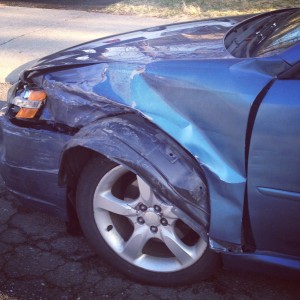If you have been following my articles about dealing with the aftermath of an auto accident you know that I got my car back from the repair shop late last week and had some issues with how it was running.
After the accident I had the choice to go either to a shop on the auto insurer’s recommended list, or to a shop of my choice. The difference was that
– the recommended shops agreed to charge no more than the repair amount approved by the insurer after appraisal (and would be paid directly).
– going to a non-recommended shop meant the insurer would send me a check for the appraised repair amount, I would have no guarantee the shop would accept that as payment in full, plus if they uncovered additional damage while repairing it I would need to get an additional appraisal and another check, delaying full repairs.
Given the extent of the damage to my front end
I decided to go with an insurer-authorized shop run by a major (though not Subaru) dealer a mile from my house since I didn’t want the hassle of taking responsibility for coordinating with the high probability of additional damage being discovered after only a visual assessment.
Also, I had damage from a minor accident several months ago for which I had claimed and received a check but had not bothered to repair yet since it was not impairing the car’s functions – this seemed like a good time to have that done as well since they would not charge more than the appraisal (though I would need to pay it since I had been paid by the insurer).
Here are some things I learned from the experience: Continue reading

